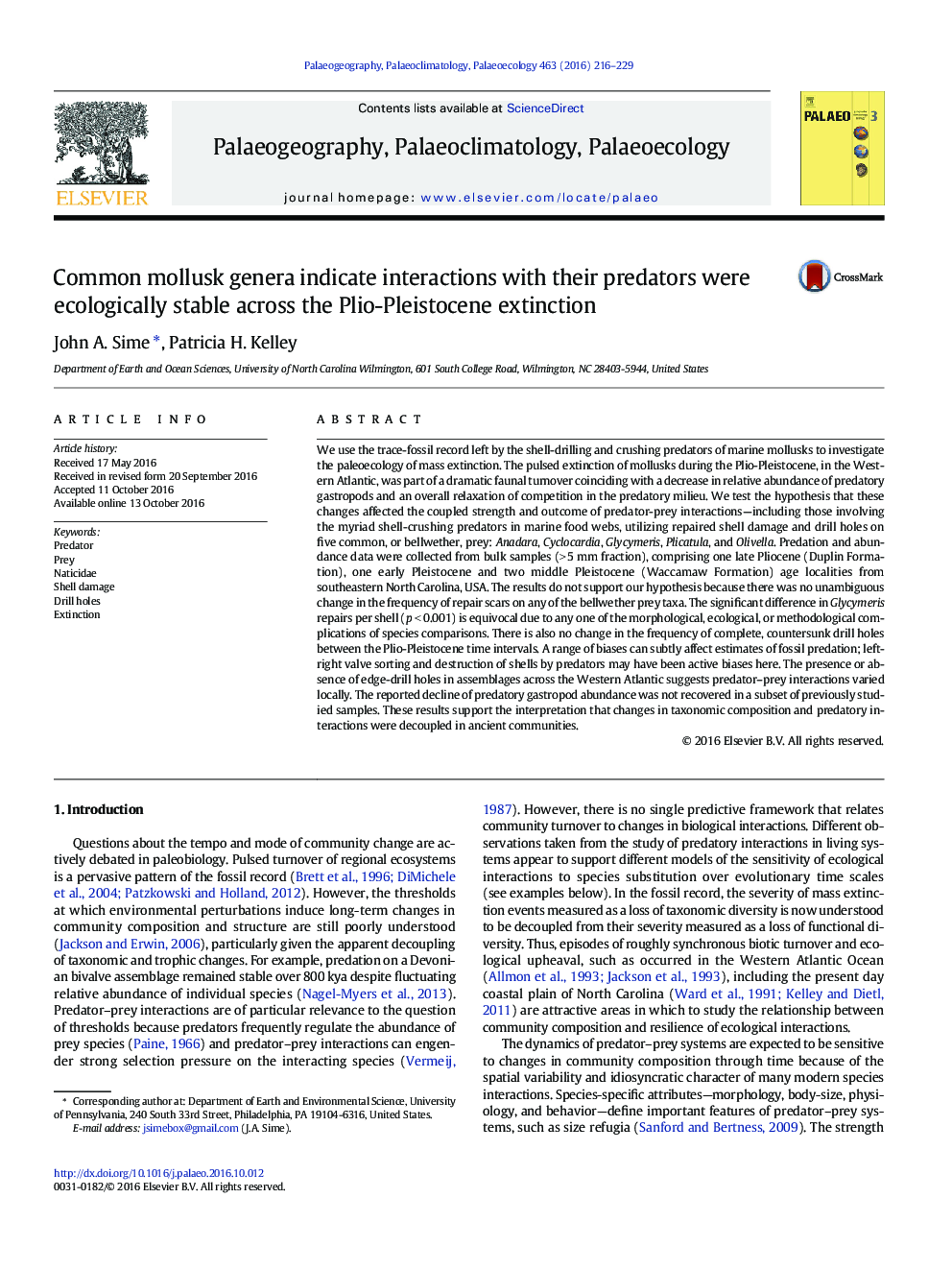| کد مقاله | کد نشریه | سال انتشار | مقاله انگلیسی | نسخه تمام متن |
|---|---|---|---|---|
| 5755749 | 1622128 | 2016 | 14 صفحه PDF | دانلود رایگان |
عنوان انگلیسی مقاله ISI
Common mollusk genera indicate interactions with their predators were ecologically stable across the Plio-Pleistocene extinction
دانلود مقاله + سفارش ترجمه
دانلود مقاله ISI انگلیسی
رایگان برای ایرانیان
کلمات کلیدی
موضوعات مرتبط
مهندسی و علوم پایه
علوم زمین و سیارات
فرآیندهای سطح زمین
پیش نمایش صفحه اول مقاله

چکیده انگلیسی
We use the trace-fossil record left by the shell-drilling and crushing predators of marine mollusks to investigate the paleoecology of mass extinction. The pulsed extinction of mollusks during the Plio-Pleistocene, in the Western Atlantic, was part of a dramatic faunal turnover coinciding with a decrease in relative abundance of predatory gastropods and an overall relaxation of competition in the predatory milieu. We test the hypothesis that these changes affected the coupled strength and outcome of predator-prey interactions-including those involving the myriad shell-crushing predators in marine food webs, utilizing repaired shell damage and drill holes on five common, or bellwether, prey: Anadara, Cyclocardia, Glycymeris, Plicatula, and Olivella. Predation and abundance data were collected from bulk samples (> 5 mm fraction), comprising one late Pliocene (Duplin Formation), one early Pleistocene and two middle Pleistocene (Waccamaw Formation) age localities from southeastern North Carolina, USA. The results do not support our hypothesis because there was no unambiguous change in the frequency of repair scars on any of the bellwether prey taxa. The significant difference in Glycymeris repairs per shell (p < 0.001) is equivocal due to any one of the morphological, ecological, or methodological complications of species comparisons. There is also no change in the frequency of complete, countersunk drill holes between the Plio-Pleistocene time intervals. A range of biases can subtly affect estimates of fossil predation; left-right valve sorting and destruction of shells by predators may have been active biases here. The presence or absence of edge-drill holes in assemblages across the Western Atlantic suggests predator-prey interactions varied locally. The reported decline of predatory gastropod abundance was not recovered in a subset of previously studied samples. These results support the interpretation that changes in taxonomic composition and predatory interactions were decoupled in ancient communities.
ناشر
Database: Elsevier - ScienceDirect (ساینس دایرکت)
Journal: Palaeogeography, Palaeoclimatology, Palaeoecology - Volume 463, 1 December 2016, Pages 216-229
Journal: Palaeogeography, Palaeoclimatology, Palaeoecology - Volume 463, 1 December 2016, Pages 216-229
نویسندگان
John A. Sime, Patricia H. Kelley,